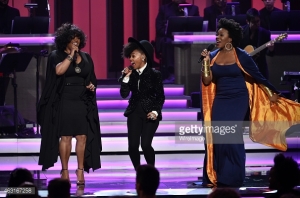This year for Lent I have given up white supremacy, heterosexism and patriarchy. Thus far in Lent, we’ve witnessed the blackest television that is both deeply experiential and beyond ontological;[1] the kind of existential blackness that tears down the idolatrous temple that the white supremacist patriarchal heteronormative master built[2] with the long match and flammable hooch (I hope you’re up on your “How to Get Away with Murder” game). In John 2:13-22, Jesus claims that if you tear down the temple – a temple that has been under construction for over four hundred years – he can rebuild it in three days. At the end of the passage the writer says, “[Jesus] was speaking of the temple of his body.” What Jesus, incarnation, being spirit in flesh should teach us is that our bodies… the body – that is material, immaterial, spirit, fleshly, soul – is constructed by figurative hands. Yes, yes we believe that we are created by God, but who and what else creates us or perceives us in the world that either lets us live or die? Our bodies, the body is a construction that we then live in and die in. Jesus is challenging the disciples and anyone who will listen that the house, the temple, the cultural idols, the theology that hegemonic power has been building for centuries needs to come down… Jesus just handed us the long match.
We need to burn what James Baldwin calls a “theology that doesn’t allow [us] to live.”[3] We have to give up/burn down a so-called black theology that is intermingled with blackness that white supremacist hetero-patriarchal capitalism (i.e. cotton, sugar, privatized prisons etc) created and a greed-hatred-fear adjusted Christianity that Constantine co-opted – if we want to live and be transformed. Perhaps transformation means burning down cultural idols housed in the temples of hegemonic power and putting broken people back together. Isn’t that what Christians supposedly believe – Christ’s broken body makes our diverse multiplicitious multitudinal bodies whole into a Body of Christ? Perhaps this is what it means to be raised with Christ because as M. Shawn Copeland says, “[t]he only body capable of taking us all in as we are with all our different body marks [race, cisgender, transgender, hetero, homo, bi, poor, rich, young, old, middle aged]… [is] the body of Christ.”[4] What Jesus is saying in the scripture is that if we burn down the house that ultimately seeks our destruction, we will be made whole into the only body that can enflesh all of us.
What are the match and hooch? It’s hearing that comb go through that 4C hair on primetime network television (How To Get Away with Murder). It is imagining a love that will always find us in Book of Negroes. It is Dr. Miranda Bailey welcoming her brother-in-law transitioning into a sisterhood of womanhood on Grey’s Anatomy. It is the image of black parental pain, anxiety and love that becomes the unrelenting pursuit of justice in life and death represented by a lawn chair on Scandal. It is imagining that Olivia Pope is hounding the DOJ on behalf of your black child crucified by white entitlement to authority in a police state. We are able to imagine that mothers who have been incarcerated for 17 years being able to rebuild relationships with her kids when we hear, “Cookie is back” on Empire. It is three black woman singer super heroes singing “as around the sun the earth knows that she’s revolving… I’ll be loving you always” in a tribute to Stevie Wonder. It is being beautifully magical… the art of black prophetic genius that should push our imaginations and actions. The match and the hooch that Jesus is handing us tears down the temple made by industry, greed and hatred, and rebuilds it with love. Love for the Other – oppressed, enslaved, and ripped to pieces by western discourses, politics and the hatred cloaked in theological verbiage we preach from the pulpit. Christ-centered transformation means Christ-centered burning and rebuilding. Restoring the lives that normative theology doesn’t give the opportunity to breathe or matter– and lets us all live and love.
[1] Victor Anderson, Beyond Ontological Blackness: An Essay on African American Religious and Cultural Criticism, (New York, Continuum: 1995).
[2] Audre Lorde, “The Master’s Tools Will Never Dismantle the Master’s House” in Sister Outsider: Essays and Speeches by Audre Lorde, (New York: Crown Publishing House, 1984). pp. 110-114.
[3] James Baldwin, Notes of a Native Son, (Boston, MA, Beacon Press: 1984), p. 23
[4] M. Shawn Copeland, Enfleshing Freedom: body, race, and being, (Minneapolis, MN: Fortress Press, 2010), p. 83.
Cecilia Olusola Tribble is an artist, songwriter, artistic and worship consultant, and cultural critic with a Master of Theological Studies from Vanderbilt University Divinity School and a Master of Arts in Performance Studies from New York University.

Well written, Insightful, presentation and analysis on what I too am delighted to experience as positive direction in television programming. Great job cousin .
LikeLiked by 1 person
Simply Brilliant … my mind is still spinning !
LikeLiked by 1 person